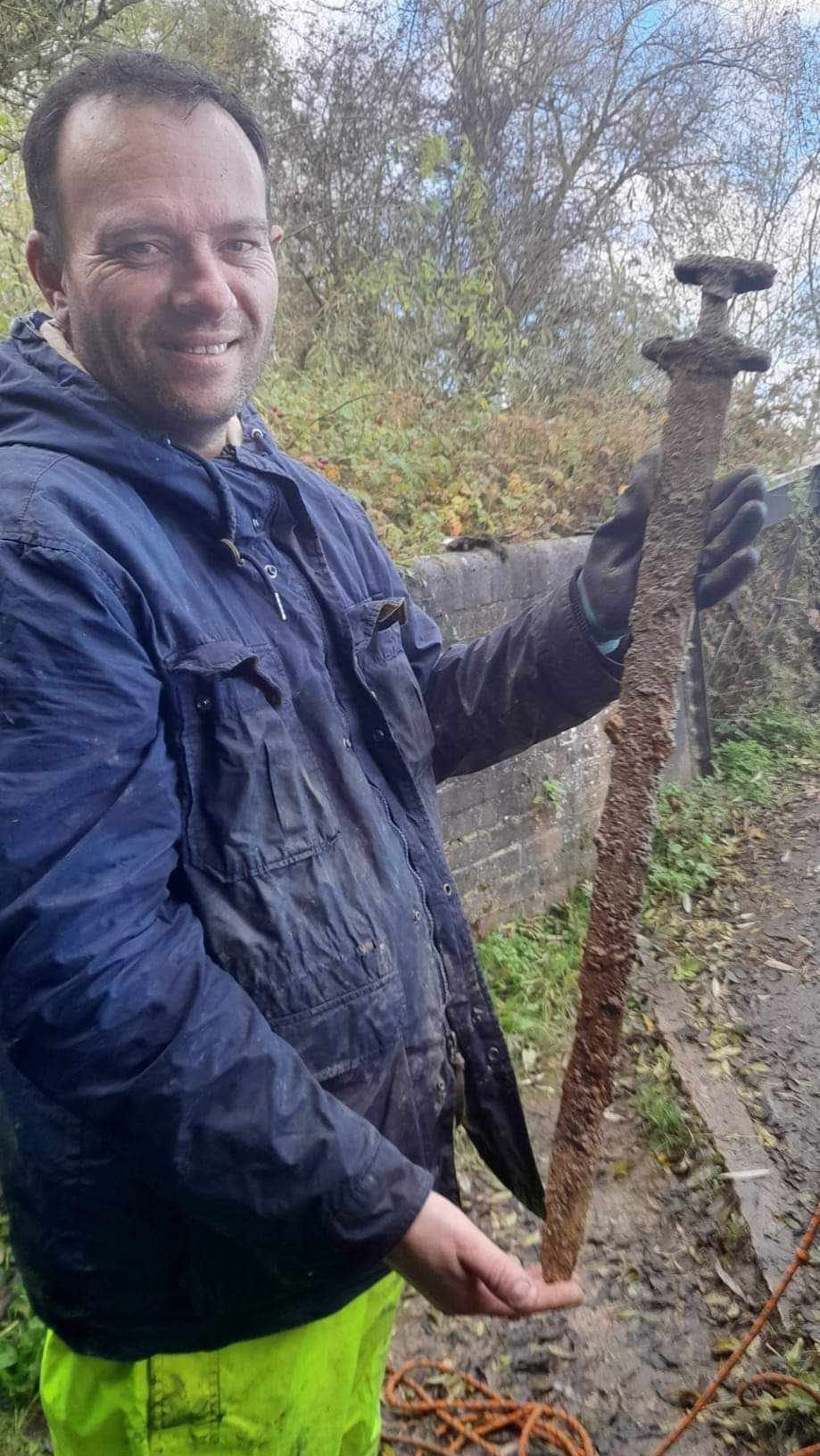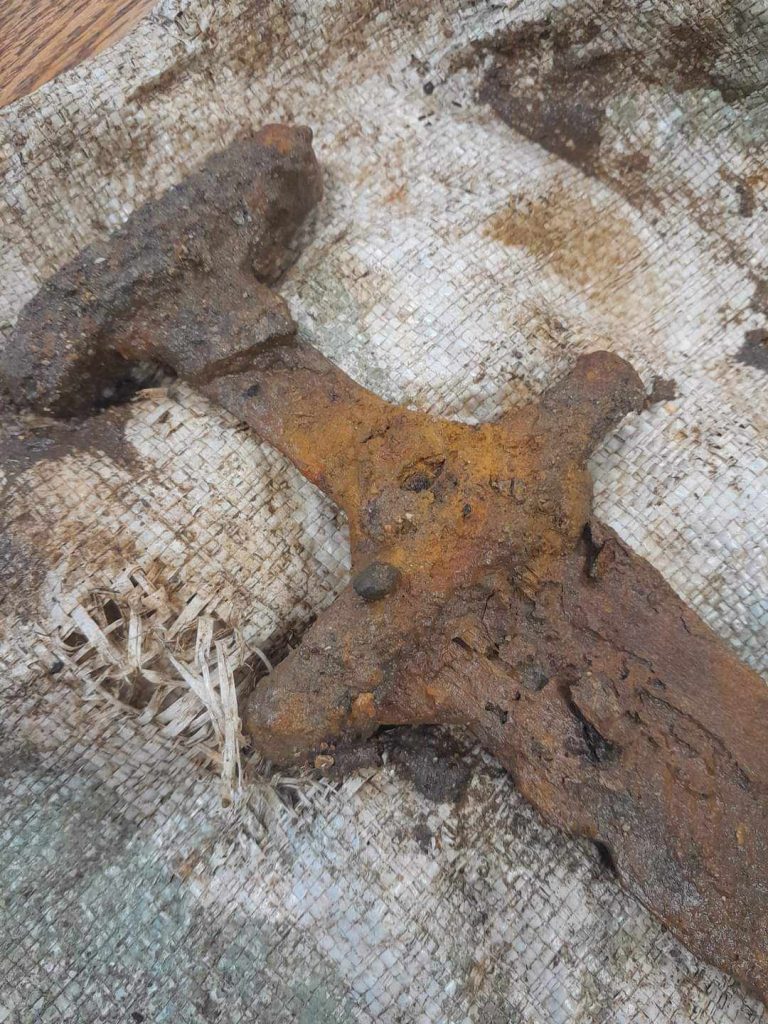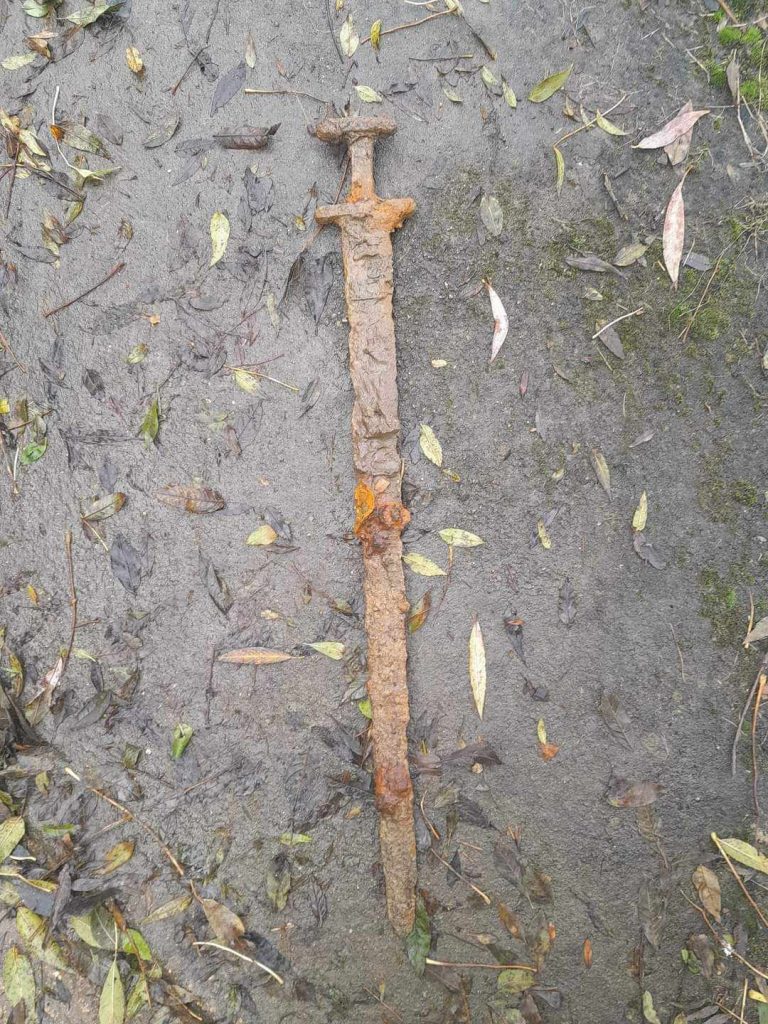
Magnet fisherman pulls out a sturdy Viking sword from the River Cherwell
Magnet fisherman Trevor Penny pulled a intact Viking sword from the River Cherwell in West Oxfordshire last November.
Magnet fishing, also known as magnet fishing, is the hobby of searching for ferromagnetic objects in open waters that can be attracted using a powerful neodymium magnet. This hobby is a combination of environmentalism and treasure hunting.
Magnet fishing usually unearths relatively modern relics – tire rims, keys, bicycles, unexploded ordnance – not iron swords hundreds of years old, History Blog reports.

Penny didn’t know what it was at first, but after consulting friends and knowledgeable acquaintances, she notified the Portable Antiquities Program finds liaison at Standlake. The finds liaison officer identified it as a Viking sword dating between 850 and 975 AD. It is the oldest object ever discovered by magnetic fishing in Oxfordshire.
To my untrained eye it looks like a Petersen Type M, judging by the large I-shaped hilt, the long blade and the date range. Type M swords in good condition can have organic residues (wood, leather, cloth) on the hilt, so it is important to preserve this sword carefully. It is corroded, but there may be an organic treasure hiding underneath this crusty exterior. Fortunately, the sword is already in the hands of museum experts and will remain there.

Mr. Penny confirmed that the sword will be preserved by the Oxford museum services and will either remain in Witney or be displayed in a museum.
Mr. Penny continued: “There has been a minor disagreement with the landowner and the rivers trust who do not allow magnet fishing. The latter sent a legal document saying they would not take action unless the sword was given to a museum, which I did.”
You may also like
- A 1700-year-old statue of Pan unearthed during the excavations at Polyeuktos in İstanbul
- The granary was found in the ancient city of Sebaste, founded by the first Roman emperor Augustus
- Donalar Kale Kapı Rock Tomb or Donalar Rock Tomb
- Theater emerges as works continue in ancient city of Perinthos
- Urartian King Argishti’s bronze shield revealed the name of an unknown country
- The religious center of Lycia, the ancient city of Letoon
- Who were the Luwians?
- A new study brings a fresh perspective on the Anatolian origin of the Indo-European languages
- Perhaps the oldest thermal treatment center in the world, which has been in continuous use for 2000 years -Basilica Therma Roman Bath or King’s Daughter-
- The largest synagogue of the ancient world, located in the ancient city of Sardis, is being restored











Leave a Reply